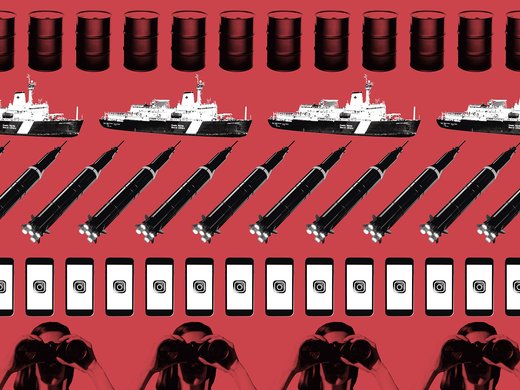The North Atlantic Treaty Organization (NATO) has a long history of engagement with space issues. The identification of space as an operational domain explicitly recognized the role that outer space plays in military operations and for national security, while aiming to achieve greater integration and interoperability among space infrastructures belonging to different member states (Stickings 2020).
NATO already recognized space as a global commons in its 2011 report Assured Access to the Global Commons: Maritime, Air, Space, Cyber (Barrett et al. 2011) and included the space domain in its “Allied Joint Doctrine for Air and Space Operations (AJP-3.3)” of 2009 and 2016 (NATO 2009; 2016a). However, it was not until 2018 that member states began to consider the strategic role of space for the alliance, during the 2018 summit in Brussels (NATO 2018).
This was followed in June 2019 by the adoption of NATO’s Space Policy during the meeting of defence ministers and, subsequently, in December, space was recognized as NATO’s fifth operational domain, alongside air, land, sea and cyberspace during the London summit (NATO 2019a).
In 2021, during the Brussels summit, the vulnerability of space assets to intentional threats, including attacks against the assets of NATO member states, was explicitly acknowledged, with NATO leaders declaring that “attacks to, from, or within space” could lead to the invocation of the North Atlantic Treaty’s article 5, following a decision of the North Atlantic Council (NAC) on a case-by-case basis (NATO 2021).
While the 2019 Space Policy was only the first step in NATO’s space endeavour, recognizing space security as a priority for the alliance, it was only during the Madrid summit, with the adoption of the new Strategic Concept, that its leaders partly unveiled the future of the alliance’s approach to space security (NATO 2022a).
Coordination: A Challenge for NATO
The Strategic Concept emphasizes that NATO is “the unique, essential and indispensable transatlantic forum to consult, coordinate and act on all matters” related to individual and collective security (ibid.). Coordination in space occurs at two levels: political and operational/technical. When looking at space as a political objective of the alliance, there are four potentially critical issues.
First, although NATO has recognized cyber and space as operational domains, the organization has not yet established a structural dialogue between the two domains, compartmentalizing them in silos. Second, the misalignment among member states on defensive approaches to the nature of outer space (i.e., an operational or warfighting domain), as well as what constitutes use of force in international law and when the use of force “amounts” to armed attack, can undermine the homogeneity of the approach to collective defence in outer space. Third, and related to the previous consideration, different perceptions among NATO member states of what constitutes counterspace may foster opportunistic strategies within the alliance (Ponta 2021, 155). Fourth, when considering the space asset targeted, the inherent national prerogative of (NATO) member states to designate certain space infrastructures as critical infrastructures (CIs) may lead to different perceptions of the same threat, which may then affect NATO’s overall decision-making process in assessing that threat.
When assessing whether to act in response to different low-scale intentional and non-kinetic operations1 conducted against space infrastructures and evaluating the proportionality of such a response, one key question for the alliance will be: When assessing a (potentially cumulative) set of hostile operations, which operations matter, especially if those operations are heterogeneous, of various intensity or target different segments of the space infrastructure?
Ultimately, the question refers to the evaluation of the scale and effects of such operations.
Three examples illustrate the complexity of these issues:
- In 2018, Russia was accused of having jammed GPS signals before and during NATO’s Trident Juncture, the alliance’s largest exercise since the Cold War (Browne 2018).
- In 2019, a report from the US Center for Advanced Defense Studies (2019, 15) claimed that since February 2016, almost 10,000 spoofing incidents originating from Russia or Russian-controlled areas had been conducted against satellite systems to deliver false positioning information, affecting more than
1,000 civilian-vessel navigation systems. - Finally, on February 24, 2022, attackers gained remote access to a segment of the KA-SAT network, impacting tens of thousands of active modems within Ukraine and across Europe (Viasat 2022), with UK and US intelligence suggesting Russia was responsible for the operation (National Cyber Security Centre 2022).
In all three cases, the electronic and cyber operations were reversible and time-limited, but not necessarily their consequences. In the first case, the jamming of GPS signals during real-life military operations could lead to the misdirection of troops, and the same applies to spoofing operations that mislead military ships and aircraft. As for the third example, while it is true that the Viasat cyberattack did not have critical consequences for Ukraine, the fact that this attack was conducted an hour before the invasion of the country and was initially directed toward military communications could have triggered the use of other hybrid warfare techniques by Russia and influenced the decision-making process of NATO or its allies.
The above examples show the complexity of assessing the scope and effects of non-kinetic operations against space infrastructure, indicating that, ultimately, the alliance’s assessment of the consequences of each intentional operation will be conducted on a case-by-case basis.
The next critical question then becomes how to carry out such an assessment, and this is where fundamental coordination and, ultimately, harmonization on common criteria and parameters are needed to streamline NATO’s decision-making process and avoid the concerns described above. On the one hand, there is the assessment of targeted infrastructures, which could help to evaluate the scope and effects in a harmonized manner throughout the alliance, especially in light of the possible invocation of article 5, which has a political dimension of coordination. On the other hand, there are the means by which the circumstances (and the consequences for the strategic space environment) of non-kinetic operations are assessed, which is instead a technical challenge concerning space domain awareness (SDA) and information sharing within NATO.
CIs and Their Protection: The Political Dimension of Coordination
The new Strategic Concept reinforces the alliance’s commitment to identifying and mitigating strategic vulnerabilities and dependencies, including in CI and supply chains. At present, the designation of CI, including with regard to space infrastructures, is and will remain a national prerogative based on national security interests. Here, potential discrepancies among NATO member states will become evident regarding the types of space infrastructure to be considered critical, but also regarding the segment that should be considered critical within the same infrastructure, with inevitable consequences at the level of CI protection strategies.
NATO could have the role of aggregator and become the forum for building consensus on CI designation in relation to space.
At the political level, consistent with the new Strategic Concept, NATO could be used as the forum in which to develop a common understanding of strategic concepts in relation to space resilience and space deterrence, deepening the coordination and exchange mechanisms already available within the alliance in the cyber operational domain.
NATO could have the role of aggregator and become the forum for building consensus on CI designation in relation to space. Initially, through its Space Centre of Excellence in Toulouse, France, NATO could support the coordination and designation of certain space infrastructures as critical to NATO’s mission or for the safe operation of a number of CIs. This could have substantial implications in the formation of a common understanding and agreement on the scale and effects resulting from the permanent or temporary degradation of the targeted assets. In relation to the type of threat, this activity could then be coordinated with the NATO Cooperative Cyber Defence Centre of Excellence in an interdisciplinary way and through a lessons-learned approach from the cyber defence debate.
Through the NAC, NATO’s member states could then propose, in a classified environment, a list of infrastructures to be designated as critical to NATO’s mission. This would help coordinate the development, agreement and sharing of best practices to be implemented at the national level in operators’ security plans. It would also establish minimum security solutions, updated through regular risk and threat assessments in relation to these infrastructures, including through exercises,2 and fulfill the objective of the 2016 Warsaw NAC meeting (NATO 2016b).
Agreement on which space infrastructures are mission-critical for NATO could then lead to the establishment of an additional layer of defence through CI protection. This approach would not only reinforce NATO’s role as a coordinator of best practices in this field, and ultimately increase the alliance’s resilience in line with its policy objectives, but it would also result in uniform CI protection at the member-state level, reducing infrastructure vulnerabilities, including at the cybersecurity level, and ensuring a consistent level of protection across the alliance, both at the cyber and space levels.
At the political level, the NATO 2030 agenda (aimed at strengthening the alliance against future challenges) may also represent an invaluable tool. In fact, a crucial proposal that emerges from the agenda is to strengthen political consultation and coordination within the organization. In terms of understanding space threats and the elaboration of defensive scenarios, more frequent high-level meetings and broader political consultations within the alliance on old and new issues will ideally prevent divergent approaches to common security threats by NATO member states, provide a trust-building tool among member states and reduce windows of opportunity that could be exploited by adversaries.
Finally, the identification of space vulnerabilities and interdependencies, the designation of mitigation measures and the implementation of redundancy mechanisms alongside the entire space supply chain, established through agreements and policies, could foster a more dynamic and responsive approach by NATO and its member states to cross-domain threats, also helping to overcome the current compartmentalization into silos of the cyber and space domains.
Coordination in SDA: An Operational Objective
One of the objectives set by NATO’s Space Policy, which is instrumental for developing a shared understanding of evolving space threats and vulnerabilities, as well as for the assessment of the scale and effects of non-kinetic operations in outer space, is the development of SDA.
In its Space Policy, NATO declared that the organization is developing SDA through a number of actions, including general political and military awareness across the alliance on the strategic role of space for NATO, building a shared understanding of evolving space-related threats and vulnerabilities, and voluntary sharing of information and data on national space activities.
In NATO’s Space Policy, SDA is defined as the “shared understanding of the operational space-related environment, threats and vulnerabilities”3 and encompasses the following functional areas: space situational awareness (SSA); intelligence, surveillance and reconnaissance (ISR); positioning, navigation and timing; satellite communications (SATCOM); meteorological services; and shared early warning (NATO 2019b).
One of the Alliance’s steps toward establishing SDA is to build a shared understanding of the evolving space-related threats and vulnerabilities “including through continued information and intelligence sharing among Allies, as well as fusion and assessment of this material at NATO level” (NATO 2019b, emphasis added). However, NATO does not own space assets and is mostly a customer of member states’ space products, through dedicated memoranda of understanding (Ponta 2021, 164). This also applies to SDA, where NATO is ultimately dependent on member states.
A possible role for NATO as coordinator could be to promote joint initiatives, with the aim of increasing interoperability and information sharing among member states (Unal 2019). This was the case, for instance, with regard to ISR capabilities with the Multi-intelligence All-source Joint ISR Interoperability Coalition initiative and with SATCOM units where a pool of states gathered in the multilateral Coalition Network for Secure Information Sharing. For SDA, those states could initially be the same states that consolidated the EU Space Surveillance and Tracking4 partnership at the EU level and that already developed SSA capabilities and practices.
Here, in order to avoid duplication of efforts, or different practices within the two organizations, NATO and the European Union could conclude a technical arrangement on space defence and integrate it with the one already available for cyber defence. Moreover, although NATO does not possess space capabilities, through the NATO Space Centre in Ramstein, Germany, the alliance could work as a liaison organization by linking national space operational centres in a classified and secure framework, fostering routine contacts among NATO member states owning SSA and intelligence capabilities and supporting the establishment of regular information-sharing practices, which is what happened in the cyber domain with the Information Sharing and Analysis Centers and the Malware Information Sharing Platform. In addition, communication and continuous exchange mechanisms within the Cyberspace Operations Centre in Mons, Belgium, could be established whenever segments of a space infrastructure, such as the usually more vulnerable ground segment, are affected by cyber operations. Here, rapid-reaction tools could also be developed, leveraging the existing expertise and knowledge of member states’ space commands.
Finally, since the alliance has already started to map the capabilities of its allies, NATO could work as a forum to identify capability needs and requirements with regard to SSA and SDA, leveraging the NATO Defence Planning Process and adopting a capability-driven approach, as was the case in the cyber context.
Conclusion
NATO must become more responsive to quickly react and adapt to a more rapidly evolving strategic environment, which today operates across cross-cutting operational domains, including outer space. In recent decades, new and old competitors have resorted to mixed counterspace means to challenge and undermine strategic stability in space, overcoming the old formula of space contestation. While kinetic anti-satellite (ASAT) weapons are today primarily used to project state power — and by global and regional powers to signal their military ambitions — systemic rivals of the alliance, such as Russia and (increasingly assertive) China, are opting for less destructive but still disruptive and degrading counterspace technologies that intersect on different operational domains and severely compromise the security of cyber or electronics-dependent — and often critical — infrastructures, including some space infrastructures. The alliance must ensure homogeneity of action when approaching collective self-defence vis-à-vis space threats, including non-kinetic counterspace.
Through enhanced coordination and exchange of information on CI designation and protection at the national level, NATO could be the appropriate forum to establish a common understanding and assessment of the scale and effects of increasing non-kinetic operations, preventing opportunistic strategies within the alliance to stigmatize certain intentional behaviours, avoiding the inevitable misalignment among member states on defensive approaches in outer space, and integrating space and cybersecurity requirements across the alliance.
Cooperation also needs to be displayed at the operational level, where SDA is necessary to support any assessment on a case-by-case basis of non-kinetic counterspace in space, always in light of the constant geopolitical evolution of the strategic environment in space and on Earth. To support the decision-making process within NATO, sharing (and access to) space data and information is crucial and interoperability indispensable. NATO could be the right platform to facilitate joint initiatives on SDA sharing, reinforce cooperation with other supranational organizations in the space domain and promote new mechanisms to address counterspace operations in a timely manner, as well as to build common practices through shared exercises.
In the words of NATO Secretary General Jens Stoltenberg, the time has come for NATO to “adapt to this new normal” (NATO 2022b), to effectively address some of the Alliance’s institutional shortcomings and compartmentalization with regard to complex cross-sectoral operations, and to avoid adopting an analogue approach to new security challenges.



























